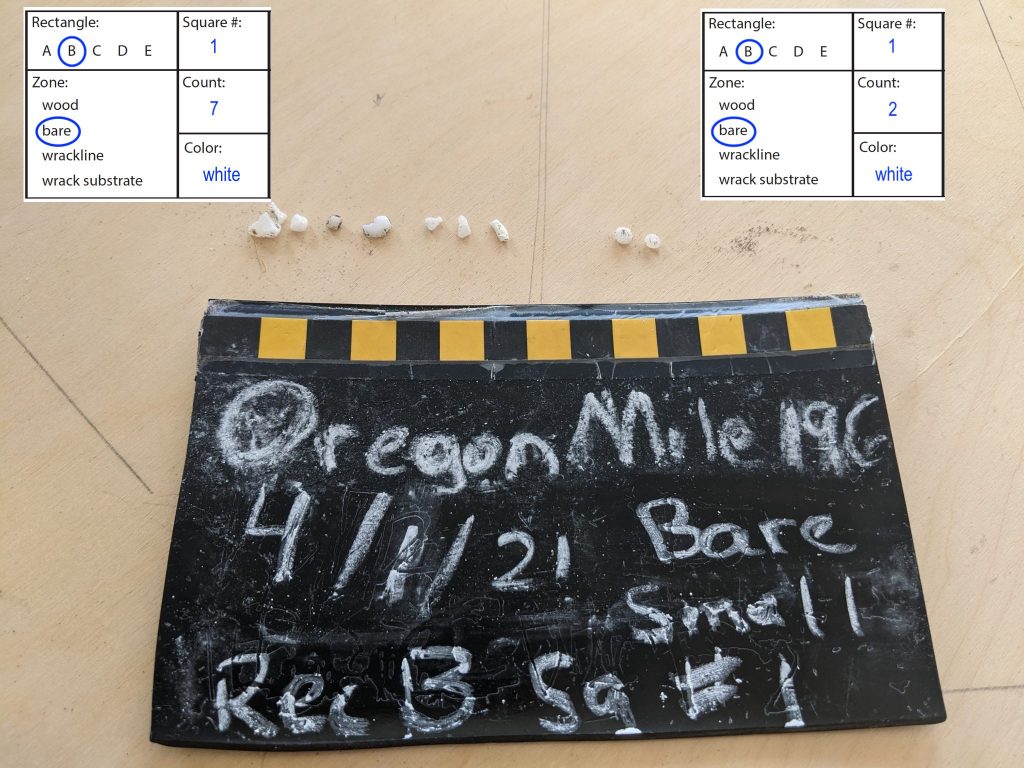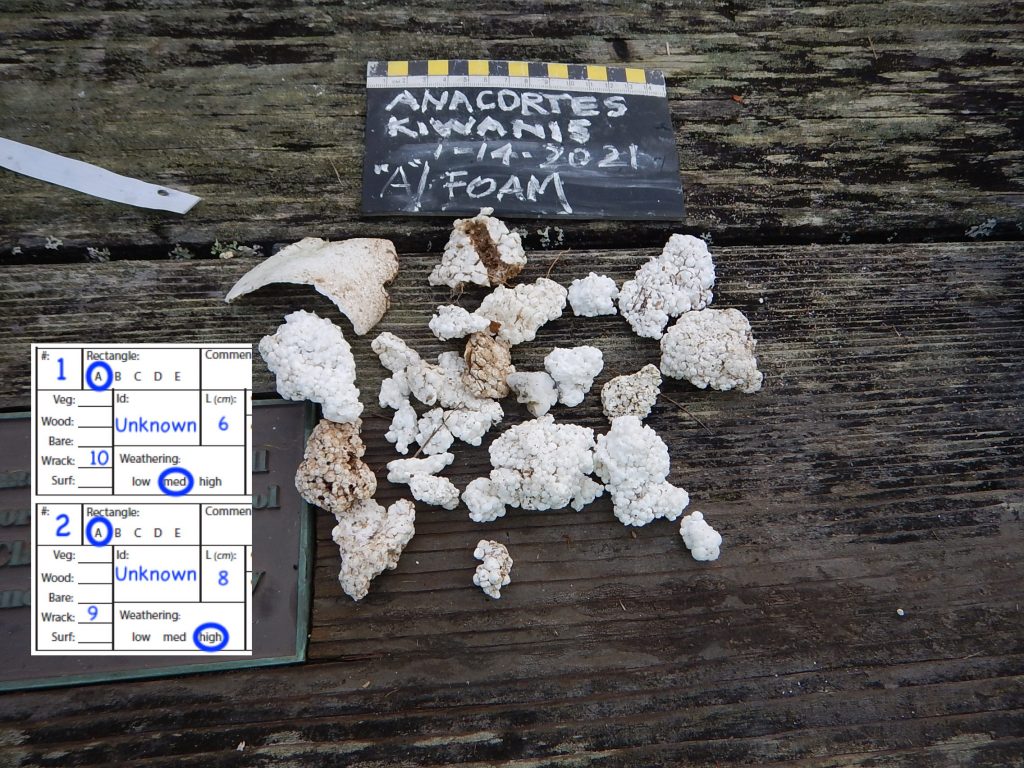The option to tally was created in order to streamline data collection for multiple identical items. This is a common place where COASST surveyors get stuck – we hope the examples below will help you harness the power of tallying!
When can you tally items together?
The short answer: When EVERYTHING is the same! We are a bit flexible on exact length and weathering matches – these would prevent tallying in most cases.
Large Debris: Debris from anywhere along the length of your beach can be tallied together if the items have the same characteristics (excluding length and weathering).

When tallying on a large debris survey, record the characteristics information and measurements for the first object only, and simply tally the zone location for all identical objects encountered on that survey. This can save a lot of time – especially on a lumber survey!
Submit one photo of each unique object, keeping in mind that some objects are so large that you might need to take multiple photos to capture it! Photos should also include a slate with the beach, date and object number. There is no need to photograph any tallied object after that first one. Just add a tally mark by the appropriate zone on your data sheet.
TALLY TIP: If you find yourself making a lot of extra notes as you record tallied items (this one has nails, or this one has biofouling) that probably means those items are too different to tally. Start a new data line, and record these unique objects with their own object numbers, and their own photographs.

Medium Debris: Identical debris items from the same rectangle can be tallied together.
The items must have the same characteristics, though if they have lengths that differ slightly that’s ok! Just record the length of an ‘average’ piece. (It’s okay to assess which is the ‘average’ by eye.)
Your photo can include all items from the same zone/rectangle combination (if they fit!) with tallied items grouped together.
If you wish to tally items from multiple zones (but the same rectangle) they should go in their own photo together. The chalkboard slate will document the beach, date, rectangle, zone (if possible), and object number, so photos can be easily matched to data.
NUMBERING TIP: the Object Number (#) is used to quickly match data with pictures, so it’s helpful to have just ONE object number per line (even if there are multiple items tallied). The final count of debris on your survey will come from your tally marks, recorded by zone! So there is no need to skip numbers or keep track of the total in the # field. Just start at 1 on the first line, and keep counting upwards through the end of your survey.
Small Debris: Identical debris from the same square/zone/rectangle combination can be recorded together in a single line of a small debris data sheet by ‘tallying’ in the Count field.

On a small debris survey we don’t ask you to record weathering or length of your items. That means ALL fields should be identical if you are tallying small debris – no exceptions!
If you tally items together, they should be grouped together in the photo for that square.

A Tricky Tally Situation
If even one characteristic is different – such biofouling on one item or nails in another – then debris items are not tally-able and should be documented on separate lines. Here are a few examples:



More examples of tally-able items:



Thank you to the COASSTers that took great pictures that made this post possible! Rosan Wuebbles and Roberta Hutton at Anacortes Kiwanis Beach, Ann Reid and Natalie Niback at March Point, Gail and Paul Pardi on Oregon Mile 196, Hanne Thiede and Steven Oien at Sunnyside, Louise Ashmun and Paull Allan from Bishops Beach West, Jean Stevens and Virginia Molenaar at South Ocean
